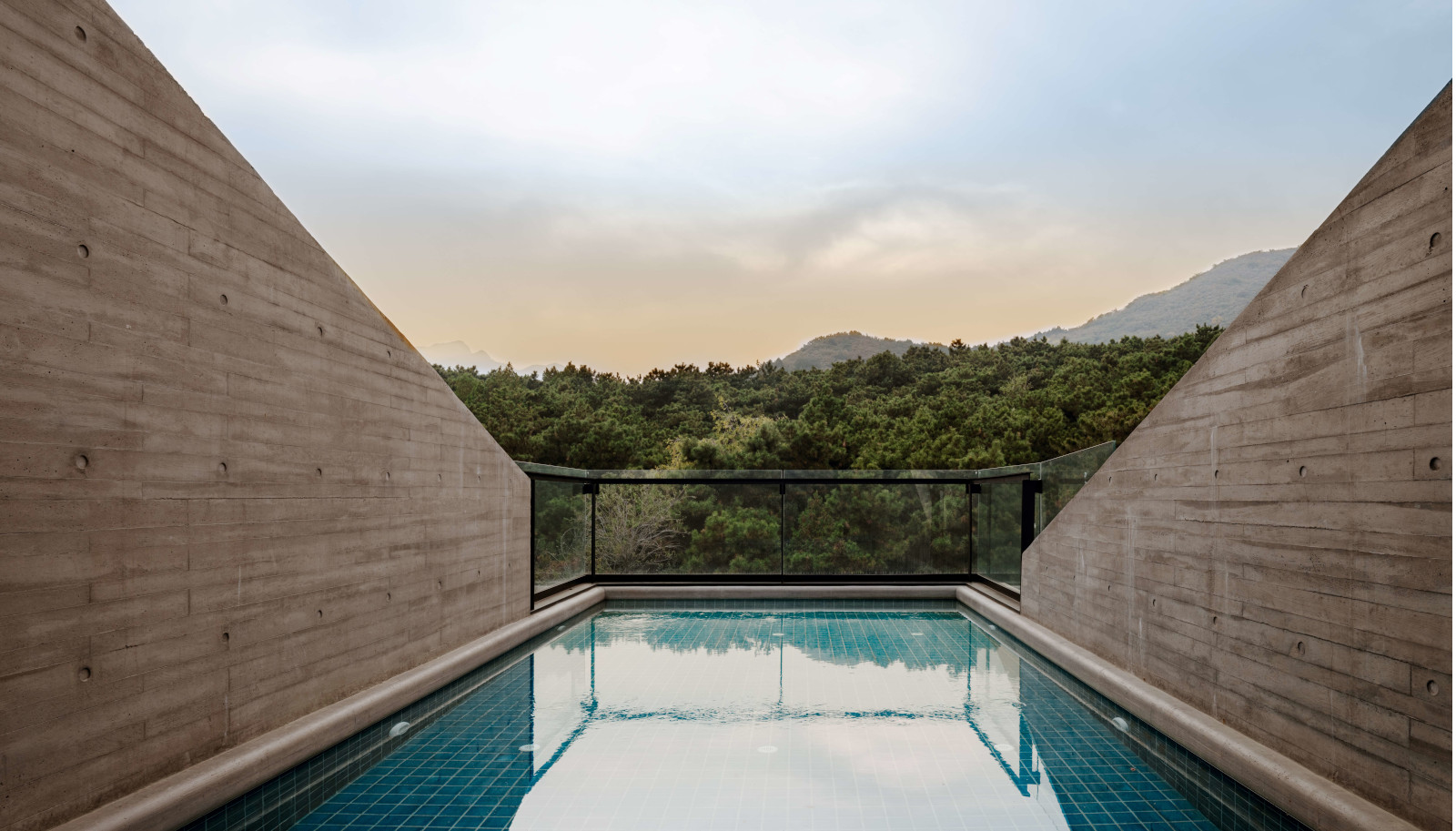
Beijing’s residents have long decamped to the cooler temperatures of nearby lakes and mountains whenever things got a little heated, literally and otherwise, in the capital. And now, with the opening of the 67-room Yanbai Villa – a portmanteau of the Chinese words for wild goose and pine tree – there’s one more excuse to pack for an overnighter.

Yanbai Villa: a haven of serenity a stone's throw from Beijing
Located in picturesque Huairou – a bucolic district north-east of the city that’s snuggled against a landscape of tree-cloaked hills and the mirror-flat Lake Yanqi – the low-slung 67-room resort sits in the midst of a leafy 30,000 sq m estate that stretches out along the shoreline of Yanqi Island.
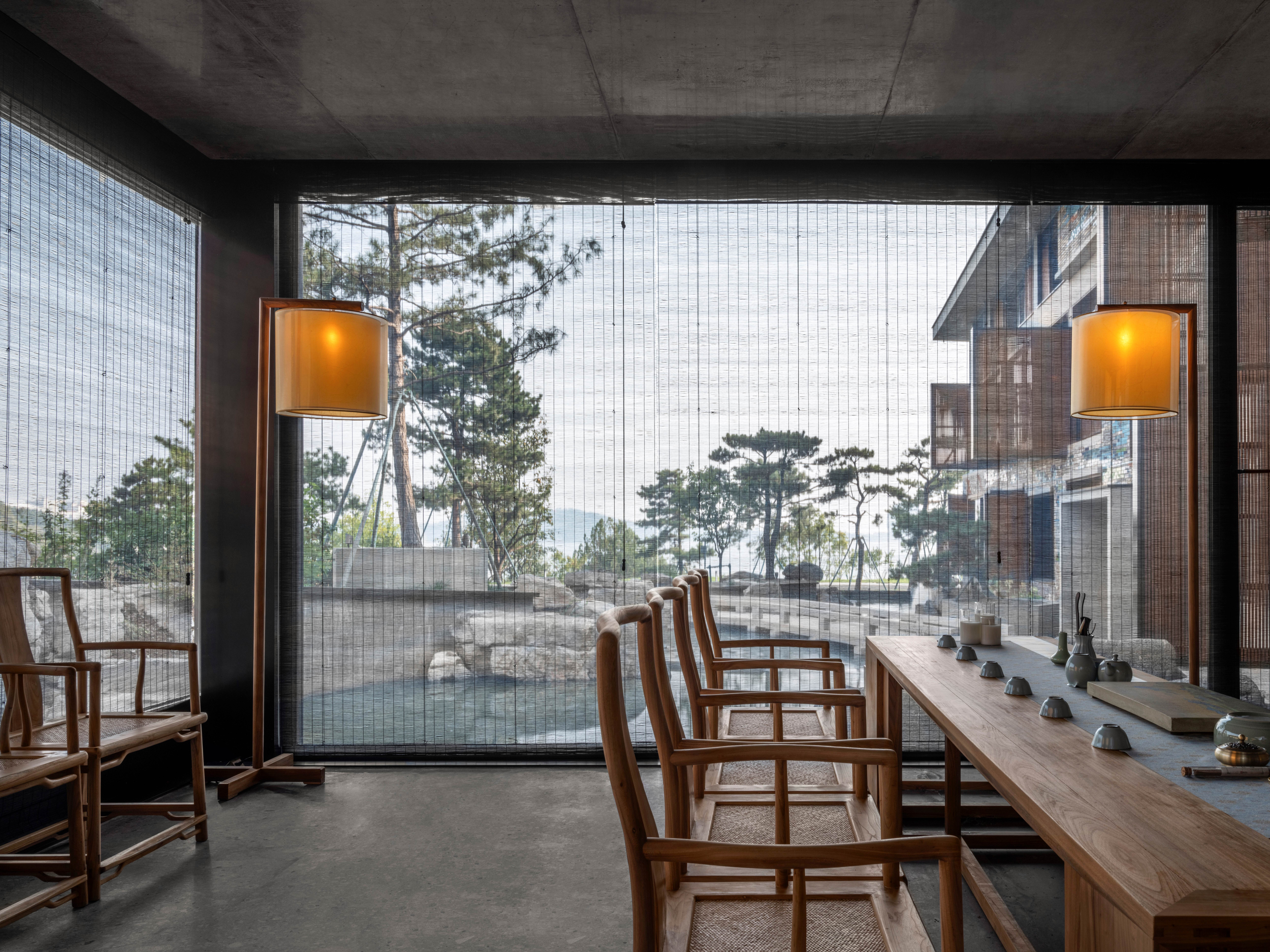
The striking architecture is the work of Wang Shu, the Pritzker Prize laureate laying out an elongated sequence of elegantly modern stone-clad buildings capped with glazed tiles, classic Chinese pavilions and internal ponds, with the entire footprint and mood inspired by the Song Dynasty artist, Liu Songnian’s Landscapes of the Four Seasons.
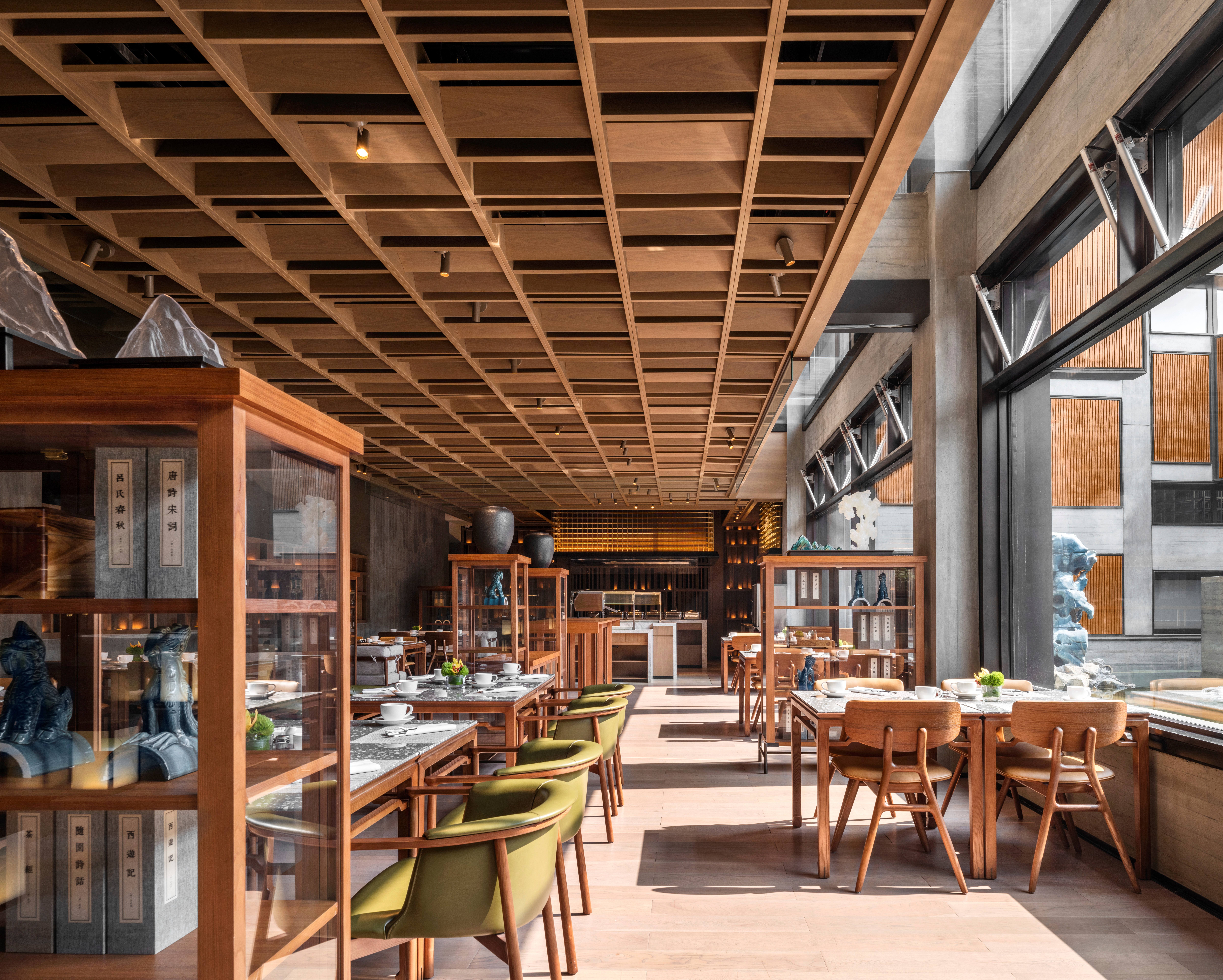
Similarly, the interiors are inspired by another Song masterpiece, A Thousand Miles of Rivers and Mountains by Wang Ximeng, which Wimberly Interiors has deftly channelled into mesmerising mosaic walls and a mood board rendered in Wang’s intense shades of blue, green and ochre.

This thoroughly modern rendition of the past streams its way through the entire resort. Lofty ceilings are rendered with interlocking timber ribs that echo the complex roof supports of the palaces in the Forbidden Palace. The patterns of finely woven bamboo window screens are repeated in rugs, balcony railings and armoires, whilst the mountain scapes of Wang Ximeng’s celebrated painting pop up as decorative features as translucent sculptures and oversized paperweights.
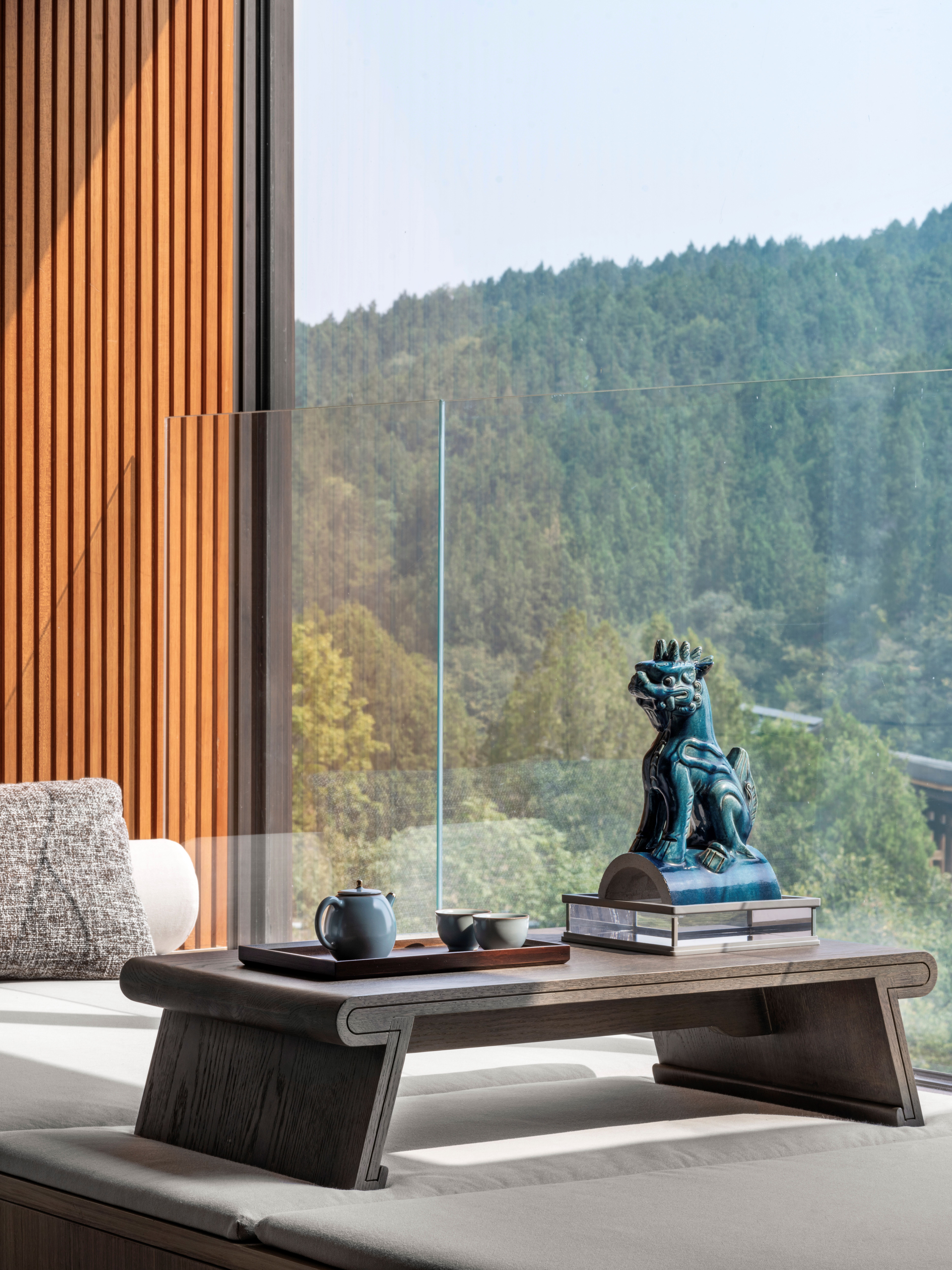
The guest rooms, in particular, feature a sophisticated mix of granite, customised furniture, and brushed timber, their potential hardness softened by the dramatic views – through oversized bay windows and floor-to-ceiling windows – of hills, sky and water beyond.

‘We took a lot of effort to create a natural palette to balance the architecture,’ says Wimberley Interiors’ lead designer, Deepu Mahboobani. ‘Particularly in the guest rooms, we wanted an element of softness that would encourage guests to retreat and recharge.’
Receive our daily digest of inspiration, escapism and design stories from around the world direct to your inbox.

Not that guests have to try all that hard to decompress. If the cantilevered rooftop Jacuzzi with its literal front-row views of the mountains don’t please, perhaps cherry-picking one’s way through the hotel’s restaurants – Chaosan cuisine and fine French dining are on offer – followed by a post-prandial cocktail in the whisky bar just might do the trick.
Daven Wu is the Singapore Editor at Wallpaper*. A former corporate lawyer, he has been covering Singapore and the neighbouring South-East Asian region since 1999, writing extensively about architecture, design, and travel for both the magazine and website. He is also the City Editor for the Phaidon Wallpaper* City Guide to Singapore.
-
 The Bombardier Global 8000 flies faster and higher to make the most of your time in the air
The Bombardier Global 8000 flies faster and higher to make the most of your time in the airA wellness machine with wings: Bombardier’s new Global 8000 isn’t quite a spa in the sky, but the Canadian manufacturer reckons its flagship business jet will give your health a boost
-
 A former fisherman’s cottage in Brittany is transformed by a new timber extension
A former fisherman’s cottage in Brittany is transformed by a new timber extensionParis-based architects A-platz have woven new elements into the stone fabric of this traditional Breton cottage
-
 New York's members-only boom shows no sign of stopping – and it's about to get even more niche
New York's members-only boom shows no sign of stopping – and it's about to get even more nicheFrom bathing clubs to listening bars, gatekeeping is back in a big way. Here's what's driving the wave of exclusivity
-
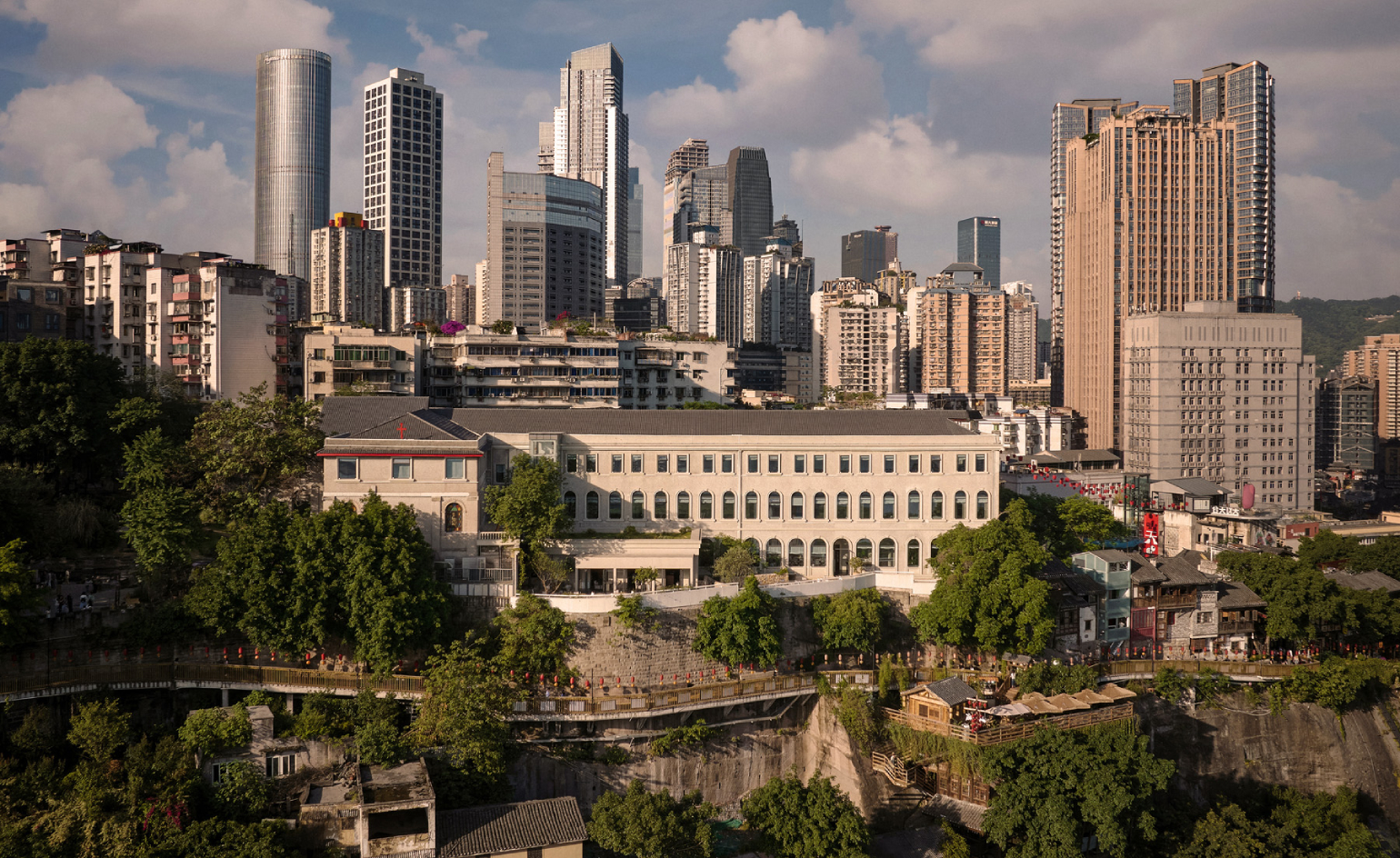 A discreet bolthole adds historic charm to Chongqing’s skyscraper jumble
A discreet bolthole adds historic charm to Chongqing’s skyscraper jumbleWith a landscape bristling with gleaming towers, Sunyata Ren’ai Hall Hotel quietly emerges as the Chinese city’s most design-forward stay
-
 Discover a futuristic bar in Shanghai with mad-scientist energy
Discover a futuristic bar in Shanghai with mad-scientist energyPenicillin opens in Shanghai with a clinical steel and concrete design by LC Studio alongside trailblazing, sustainable cocktails
-
 A colossal ‘ship’ in Shanghai honours Louis Vuitton’s travel legacy
A colossal ‘ship’ in Shanghai honours Louis Vuitton’s travel legacyLouis Vuitton’s The Louis is an OMA-designed hub combining retail, culture and dining in the heart of Nanjing West Road
-
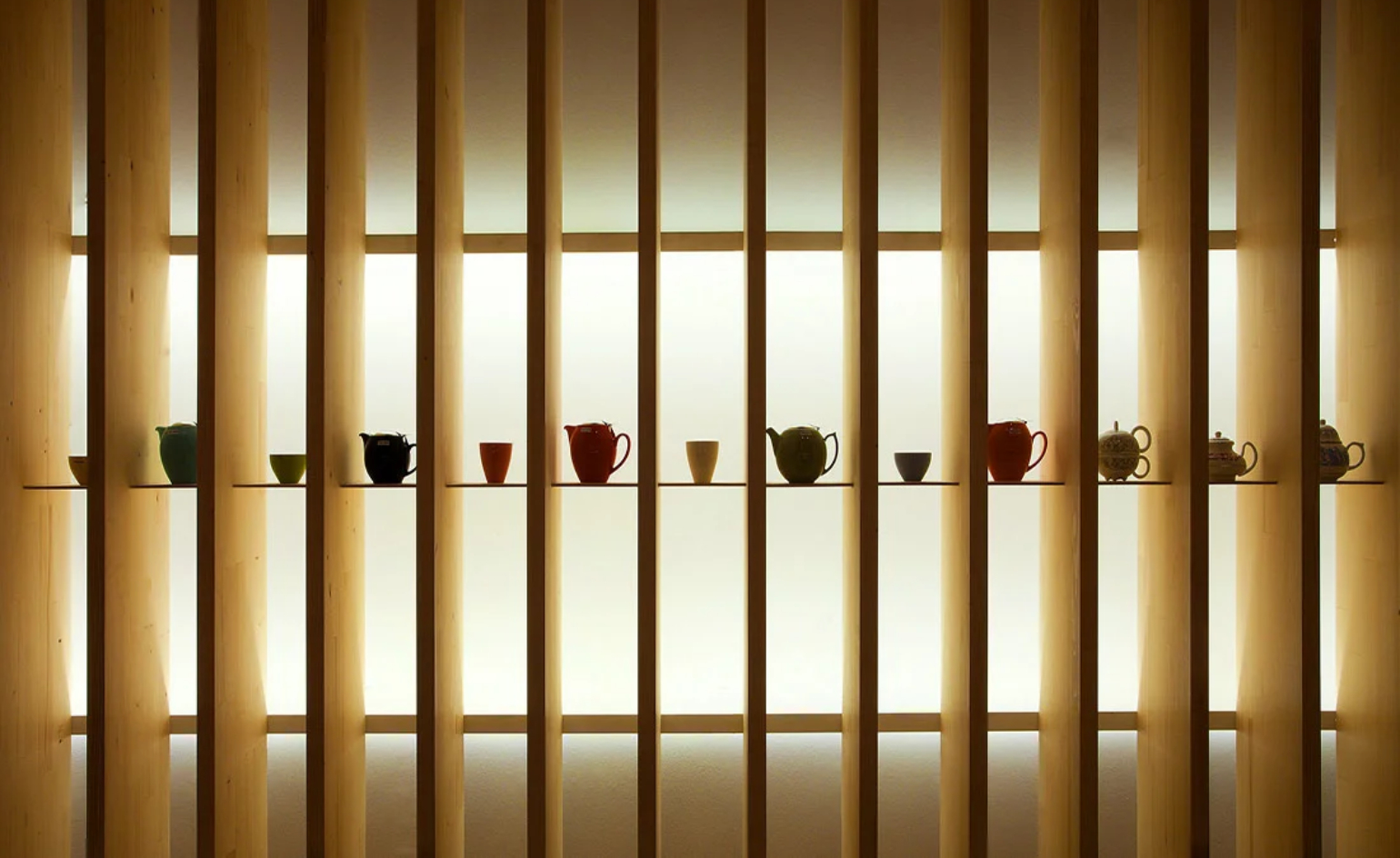 Tour the best contemporary tea houses around the world
Tour the best contemporary tea houses around the worldCelebrate the world’s most unique tea houses, from Melbourne to Stockholm, with a new book by Wallpaper’s Léa Teuscher
-
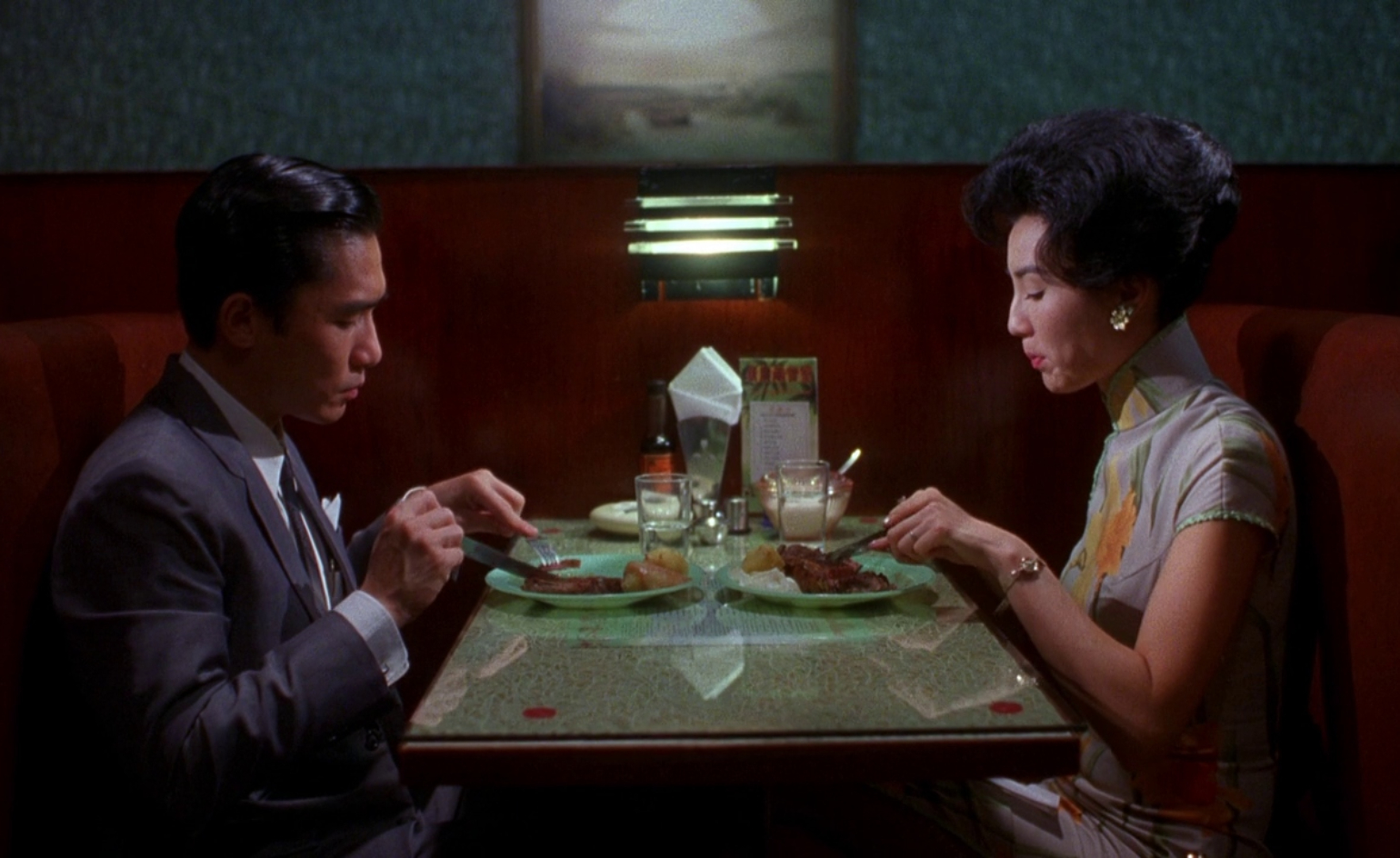 Prada and Wong Kar-wai dream up a cinematic restaurant in Shanghai
Prada and Wong Kar-wai dream up a cinematic restaurant in ShanghaiPrada partners with Wong Kar-wai to bring Mi Shang Rong Zhai to life, a dining experience influenced by the arthouse director’s seminal oeuvre
-
 Enjoy heritage views and contemporary brews at a new Beijing café
Enjoy heritage views and contemporary brews at a new Beijing caféJM Café, White Pagoda Temple by B.L.U.E. Architecture Studio nods to the history of the Xicheng District while injecting a shot of vitality
-
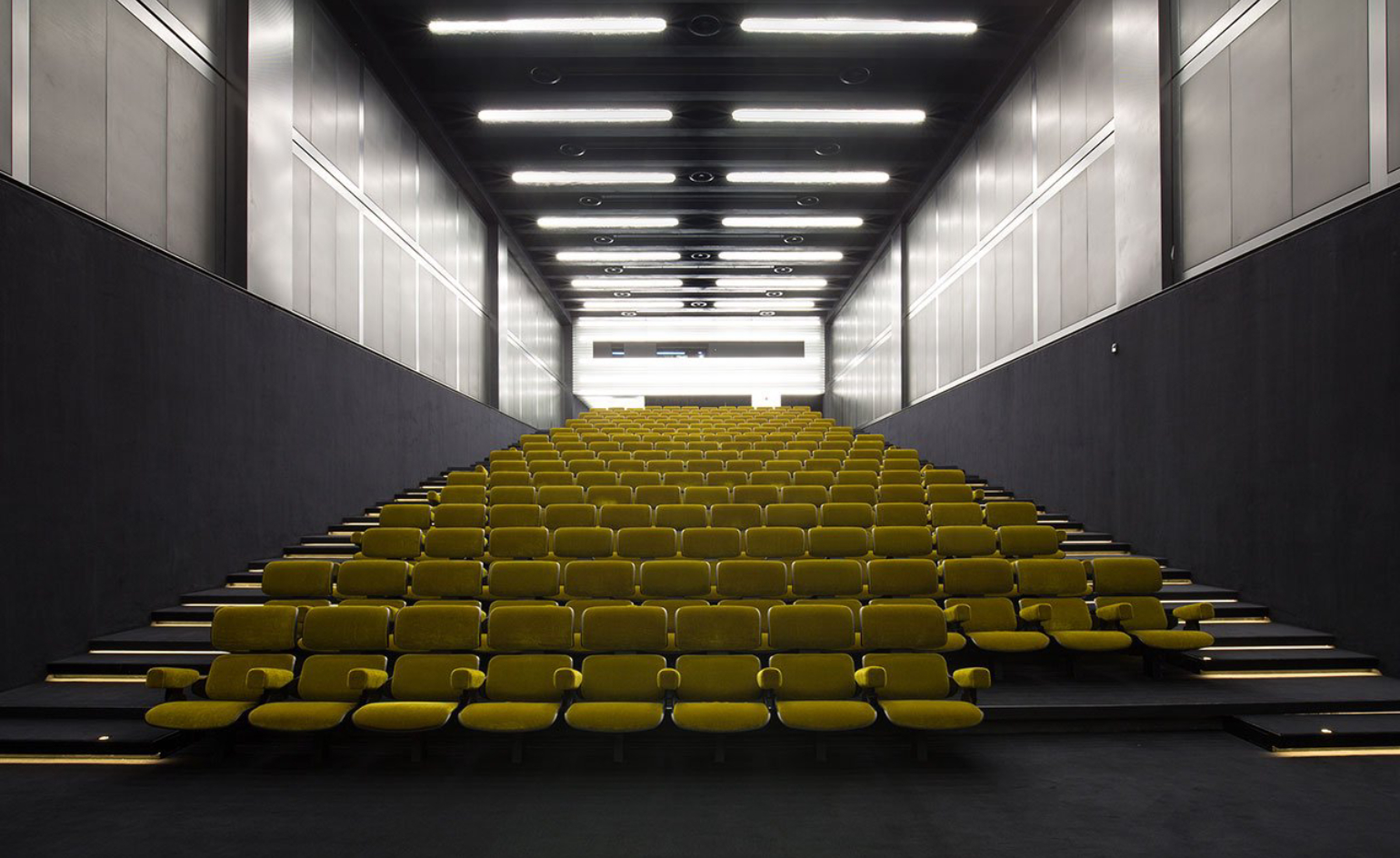 Must-visit cinemas with award-worthy design
Must-visit cinemas with award-worthy designThere’s more magic to the movies at these design-led cinemas, from Busan Cinema Centre’s ‘flying’ roof to The Gem Cinema Jaipur’s art deco allure
-
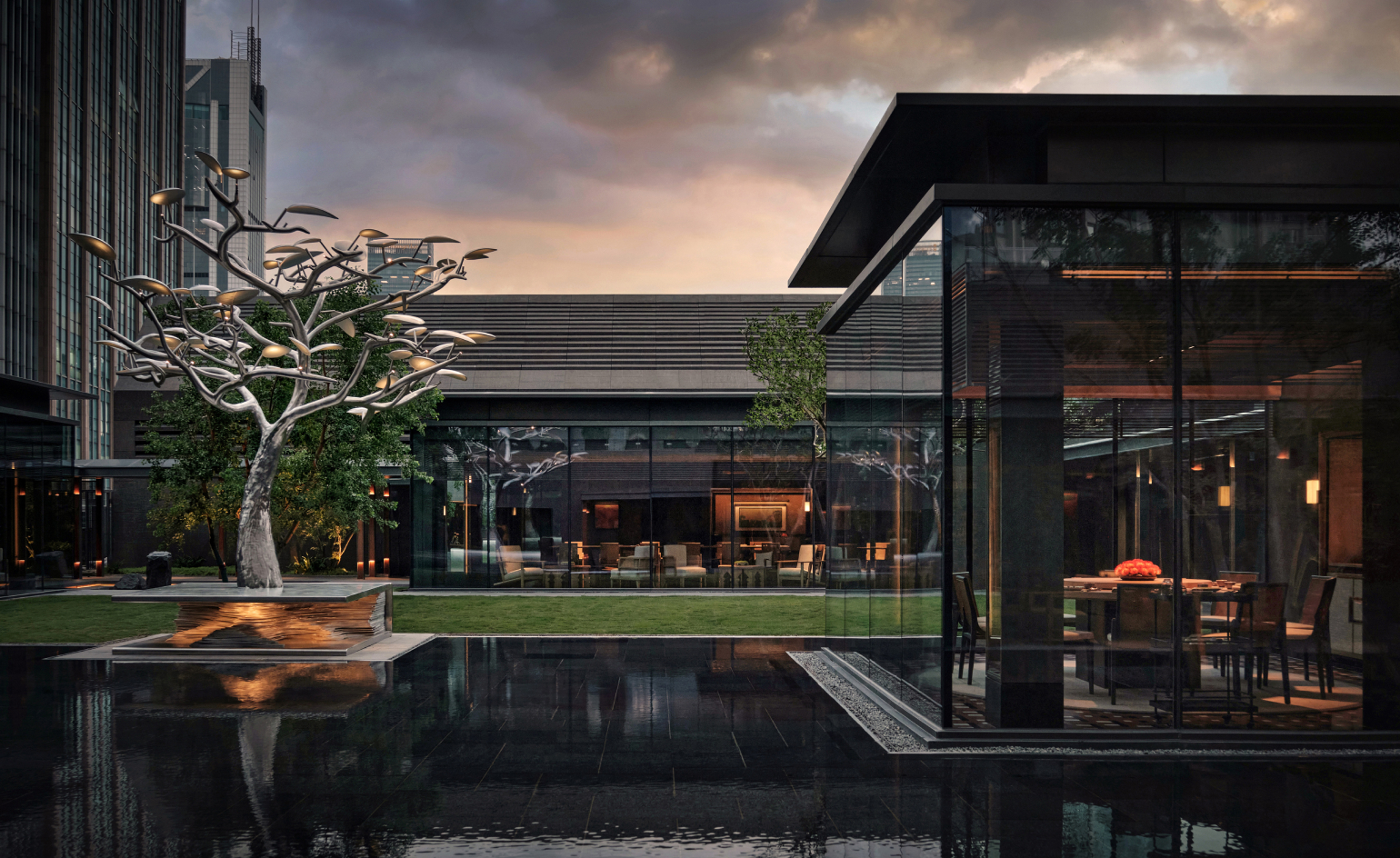 China’s Alila Shanghai hotel is a stylish hub of idle tranquillity
China’s Alila Shanghai hotel is a stylish hub of idle tranquillityAlila Shanghai, the brand's first urban resort in Greater China, is a serene bolthole amidst the pulse of the Jing'an district